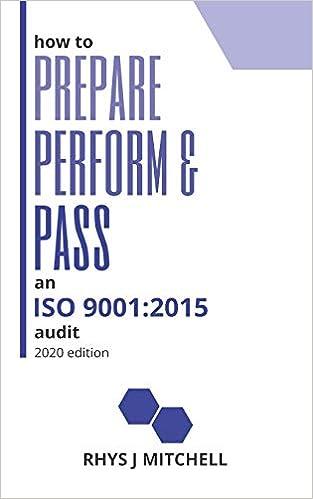Question
Question 2 Rome Ltd, a premium food manufacturer, uses a variance analysis system to monitor its performance. The company operates a standard costing system and
Question 2 Rome Ltd, a premium food manufacturer, uses a variance analysis system to monitor its performance. The company operates a standard costing system and manufactures one product, ZZII.
The market for the purchase of materials and the sales of product ZZII has been, and is expected to be, stable. The company is currently reviewing operations of its various departments for the month of March 20X1.
The following standard revenue and cost data per unit of product ZZII for the month of March 20X1 is available: Selling price 40 Direct materials 4 kg at 3 per kg Direct labour 1.5 hours at 10 per hour Budgeted production and sales for March 20X1 were 12,000 units of product ZZII. Fixed production overheads for the month March 20X1 were expected to be 40,000. Actual data for March 20X1 was as follows: Sales and production - 10,500 units of ZZII were produced and sold for 378,000 Direct materials - 52,500 kg were used at a cost of 105,000 Direct labour - employees worked for 10,500 hours at a cost of 126,000
Fixed production overheads for March 20X1 were 41,000. The following decisions were also made for the month March 20X1: The production manager suggested that employee morale is poor, and she feels they should do something about it. She suggested to increase the wage rate.
Following this suggestion, the company increased the wage rate to 12 per hour. This means in March 20X1, employees were paid at the rate of 12 per hour. To save the company in purchasing costs, the purchasing manager started purchasing the required quantity of materials from a new supplier which offered materials at a lower price.
Required: (a) Calculate the following variances: Sales price and volume variances Material price and usage variances Labour rate and efficiency variances Fixed production overhead variance You should state clearly whether a variance is favourable (F) or adverse (A). (7 marks)
(b) Using the variances calculated in part (a) and the information provided, comment on the performance of the company as a whole and its departments and reach a conclusion as to whether or not they have performed well. (11 marks)
Step by Step Solution
There are 3 Steps involved in it
Step: 1

Get Instant Access to Expert-Tailored Solutions
See step-by-step solutions with expert insights and AI powered tools for academic success
Step: 2

Step: 3

Ace Your Homework with AI
Get the answers you need in no time with our AI-driven, step-by-step assistance
Get Started


